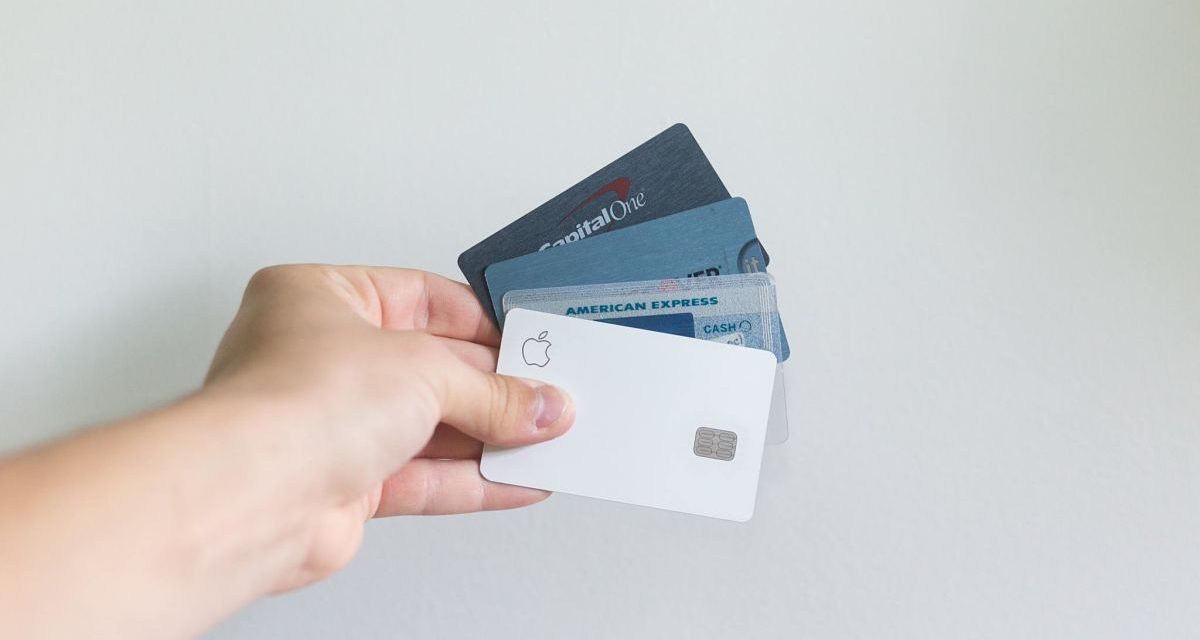Handmade small businesses face unique challenges — as well different opportunities than those who work for someone else. Check out our inspirational business graphic below. Inside the circle lists business factors that you can control. Outside the circle are all the influences that you cannot control, but still need to be able to appropriately react and adapt to. Keep these in mind when looking ahead to the future, executing your current goals, and looking behind to see how you’ve grown. In 2020, handmade entrepreneurs, like you, should focus on technological business trends and the global economy. Here’s why:
Welcome the digital wallet age
If you only handcraft wallets to store paper money, your product demand may decline. Enter the world of the digital wallet — via smartphones. Do you have or use one yet when you pay for goods and services? Not too long ago, cash was king, and then came along those thin little plastic slabs known as credit and debit cards. Now, with over 80 percent of U.S. adults using smartphones and web-enabled tablets and iPads, technology such as Apple Pay, Google Pay, and Samsung Pay have allowed consumers the ability to carry and pay for most of what they buy and use with their cell phones.
The global annual growth rate of mobile payment methods is expected to jump over 30 percent from 2016-2022, according to a report by Allied Market Research. As mobile payment platform infrastructure and support improves, expect to see use, functionality, and security features rise.
Uncertain U.S. economic outlook
According to the Federal Reserve, inflation may drop ever so slightly in 2019, but Gross Domestic Product, or GDP, is expected to fall at a faster rate. What does this mean? When inflation decreases, prices rise at a slower rate. Representing economic production and growth, a declining GDP can indicate that customers are spending less money, the government is making cuts in social spending, there may be commodity or natural resource cost increases, or a recession is nearing.
Reuter’s reports that the nonpartisan Congressional Budget Office (CBO) cautions that trade and tariff tensions could have a negative effect on GDP growth in 2019. As a small business owner, how could a potential trade war affect your business this year?
Well, if you depend on crafting all or part of your work with imported materials, your costs will likely rise. In turn, you may be faced with a decision to increase your prices to customers or earn a lower profit margin. If you only use locally-sourced or American-made materials, you now have an economic advantage over businesses that don’t. You could possibly end up selling your goods for less and use the profits to grow your business. The most proactive approach you can take as a small business is to evaluate what materials and supplies you use, where they come from, how much they cost, and then craft a business plan that adapts to potential instability.
Go live and grow your audience
In a society that currently anchors much of its communication on social media, staying relevant and making connections is more than posting videos, sharing images, or making statements. In 2019, hours watched on the internet are expected to match those in front of the TV — is your business keeping up with viewers?
Did you know that Facebook Live broadcasts have doubled year-over-year since 2016, or that Instagram Live is packed with features meant to help you gain followers? While shooting and posting live videos can come across being raw and amateur, what they do offer is authenticity. Your target audience trusts live videos because they know they haven’t been altered — plus a live video’s spontaneity is a refreshing source of entertainment and information gathering for consumers.
Try both live platforms. If you have a story to tell and a great visual experience to share, you will be sure to grow your audience and increase sales.
Marketing gets more personal
Ads inform and influence buyers and in 2019, customers are more likely to be moved by brands they trust and who put out reputable products and content. Ads that deliver value to their audience, in the way of content marketing, influencers, and referral partnerships will benefit both advertisers and consumers.
While the trend towards digital marketing has skyrocketed, so has the saturation rate — and more consumers are employing ad blockers to help filter the constant advertising they are exposed to. This is where print advertising has a huge advantage and is expected to yield increased results in the coming year. A customer can’t block a print ad, and consumers have historically trusted print sources more than online “authorities.”
In a technology-infused world, automation saves time, money, and resources — but it can lag when it comes to the human connection. In the handmade business industry, your personal association to your audience is critical to your success. So, while you might focus on mobile optimization, email campaigns, and easier transaction processing, be sure to infuse a personal touch in your customer relationships. If your customers feel valued and special, this will bring them back to you more often than because of an improved web experience.
Explore the Smartphone Wallet
Pros Cons
- Convenient
- Faster than using ship cards
- One-tap buying power
- Improved security features
- Can act as a budgeting aid
- Less to carry around
- No pin number to remember of device has fingerprint or face-recognition technology
- If stolen, can use “Find Device” apps to locate phone; cannot do this with a credit card
- Can encourage impulse spending
- Potential for loss or damage which affects access to your money
- May send sensitive information online
- Hacking risks are real
- Not all merchants accept and support Apple of Android/Google pay
- You can’t use it if your phone battery dies
Understanding Potential Trade Wars
Trade War: the effect when Country A raises tariffs on Country B’s imports in retaliation for Country B raising tariffs on Country A’s imports
The last U.S. trade war took place in 1930
Prices may rise in goods, such as recent increases in the cost of steel, aluminum, and some foods.
Facebook Live vs. Instagram Live
Instagram Facebook
- In-app live-shooting option
- Live video can be saved to your Story afterwards and/or saved to your camera roll
- “Pin” a comment to the top so viewers can easily see it
- Users can turn comments off
- Analytics are limited
- Followers can interact in real time with comments
- May be shown in the Discover/Explore section as a priority to your followers and allows more people to engage with you while live
- Some followers will be notified when you go live
- Can invite a friend to join you while shooting a live video in a split-screen format
- Ability to add fun face filters
- In-app live-shooting option
- Option to save video to your page after live session ends
- More extensive analytic metrics than Instagram
- You can invite someone else to join broadcast in split-screen mode
- Notifies followers when you go live
- Followers can interact in real time with comments and reactions
- “Pin” comments to the bottom of a video, to bring attention to viewers
- Ability to add special effects with filters and themes
- Opportunity to select your audience







